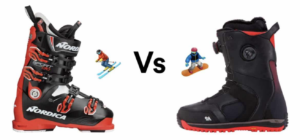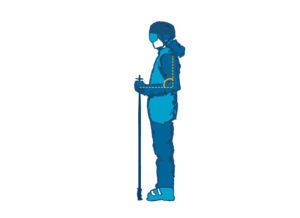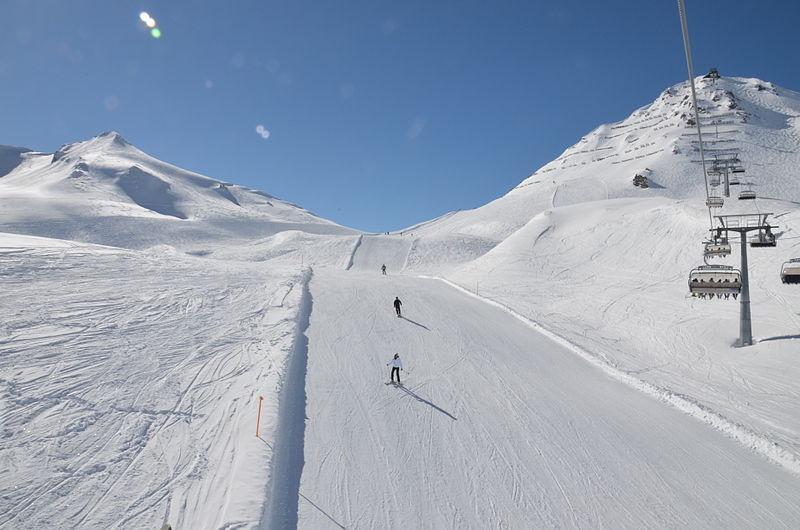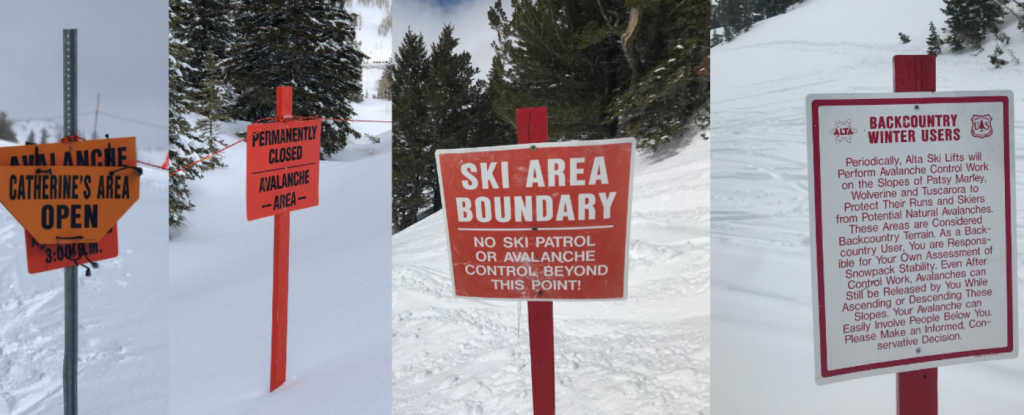
Welcome!
We understand that getting into skiing/snowboarding can seem overwhelming, but Ski Club is here to support your whole journey to playing in the mountains. Please reach out (you can dm us on instagram @5cski for the fastest online response, or come see us at the ski space below Frary Dining!) – we would love to chat!
Below are some things to know before you get into the mountains!
Layering
Hitting the slopes is a winter sport, so layering is the main game. We start with base layers, which consist of a thinner full length top top + bottom, think legging and long sleeve.
From there we adjust based on temperatures, with thicker layers like a fleece, sweatshirts etc.
Top layer is a jacket and snow pants that most of the time have some water resistance material (sweatpants and whatever jacket you have will work great!).
Hands + Feet
Gloves or mitts for the fingers. Because boots almost reach your knee, you want to have long socks.
General Notes
Cali mountain weather is generally more chill, and the rules can often be bent/ignored. Best practice is to show up prepared for any weather and layer up as needed in the parking lot as you get ready to head out. Costumes strongly encouraged.
Check out this page for a longer, more detailed write-up from a trusted outdoor gear retailer!
SKIS & BOARDS
Kind of obvious, but here you choose between one or two sticks.
There are many different types of skis and boards, which can feel overwhelming. But anyone in a ski/board shop should be able to find a good fit for you based on the kind of skiing/riding you do or want to do. If you are renting, the rental shop should help make these decisions for you.

BOOTS
Skiers and Snowboarders use different boots. Yes, ski boots are less comfy, and yes, we are upset about it. Both tighten and loosen, but boot size is still super key. Boots that don’t fit are bad news (losing your toenails is bad). If you are renting, they will fit some for you.
HELMETS
YOU NEED A BRAIN BUCKET! We are all about protecting the noggin. Ideally, you want a helmet that is meant for snow, but we know they can be pretty expensive–other types of helmets can work in a pinch. With climbing/biking/other helmets, make sure you wear a beanie or warm hat to keep those ears cozy. Moral is, put on yer lid, kid… many folks on our Executive Board would be happy to tell you about their gnarly (dumb?) concussions from throwing themselves down the mountain–helmets have saved our skulls.
Bonus points if your helmet has a sticker that says “MIPS” (Multi-Directional Impact Protection System). It is the industry standard in helmet technology to reduce brain injury.
EYEWEAR
Goggles are the classic choice, but sunglasses work if that’s what ya got. It gets real bright on the mountains with the snow reflecting back at you– eyewear will save you a nasty headache, and your eyes from sunburn.

POLES
Skiers typically use poles, however, you don’t really need them on your first day or two. It can actually be better to learn without them so you can focus on your technique! To fit poles, wear your ski boots and flip the pole so the handle is touching the ground. Next, grab just underneath the basket – your elbow should be at a ~90º angle. Having poles that are too short is better than having poles that are too long.
FACE COVERINGS
In the COVID era, some resorts now require a face covering of some sort. Buffs are the superior option because you can take them on and off easily. Mammoth and Big Bear are not currently enforcing masking. It’s also great to have a face covering to keep your lips and nose warm!
Don’t Ski Alone – A good general rule, especially when you are learning. Ski resorts can be large, and it can be easy to get lost or hurt by yourself.
Wear sunscreen – UV exposure in the mountains is hardcore – even on cloudy days! All the cool mountain babes wear sunscreen. If you are at the mountain with the club, the trip leaders should have some with them.
Pack Scooby Snacks – On the go fuel is essential for a good, hard day on the mountain (and resort food can be wildly pricey). Chairlift time is snack time so make sure you have some good pocket options stuffed somewhere. You are looking for grub that can get smashed in a pocket, and is easy to shovel into your mouth. Easy options include trail mix, skittles, a sandwich in a bag, and granola bars. Try to avoid messier snacks and things that can melt.
We (generally) go DOWN the mountain, and the chairlifts are what boost you back up to the top. Best case scenario, you are with a friend who has gotten on a chairlift before and can walk you through the process together, but here’s a little intro anyways:
With skis:
https://www.youtube.com/watch?v=MUwmiY9K5es
With snowboard:
https://www.youtube.com/watch?v=wl7sIvMgrqg
Also, if you do fall over getting on/off don’t worry–we have all been there at some point, but most importantly, the lifty (lift operator) can easily stop the chairlift, so you don’t need to panic about being run over by the next chair. It may feel funky the first few times, but you’ll get the hang of it no sweat!
ON vs OFF PISTE
On piste is mountain terrain that has been groomed, AKA pressed down by a snow cat machine. On piste runs are also called groomers and corduroy, because the lines resemble corduroy fabric. Groomers are where you want to be as a beginner (veering off is a great way to get stuck, overwhelmed + lost).
Off piste is mountain terrain that has not been groomed, and therefore has a different texture. You can see the difference between on and off piste terrain in the picture below.

RUN DIFFICULTY
Here is the rating scale for runs on the mountain.
 Sticking to the green circles (known as greens) is a safe bet for your first day up. Signage at mountains can be absolute shit so in doubt, if you are lost or looking for the easiest way down, follow the green circles. Most green circles lead back to a base area.
Sticking to the green circles (known as greens) is a safe bet for your first day up. Signage at mountains can be absolute shit so in doubt, if you are lost or looking for the easiest way down, follow the green circles. Most green circles lead back to a base area.
RESORT BOUNDARIES
Many resorts set up ropes throughout the mountain to help guide you down. As a beginner, DO NOT cross under any ropes. Ropes are generally set up to give you a heads up that you are entering more advanced terrain, are near a cliff, or are at the ski resort boundary.

CLICKING INTO BINDINGS
How to click into bindings:
Skis: https://www.youtube.com/watch?v=3qcmOZ0I0vU
Board: https://www.youtube.com/watch?v=nkjZqq8pPWQ
MOUNTAIN ETIQUETTE